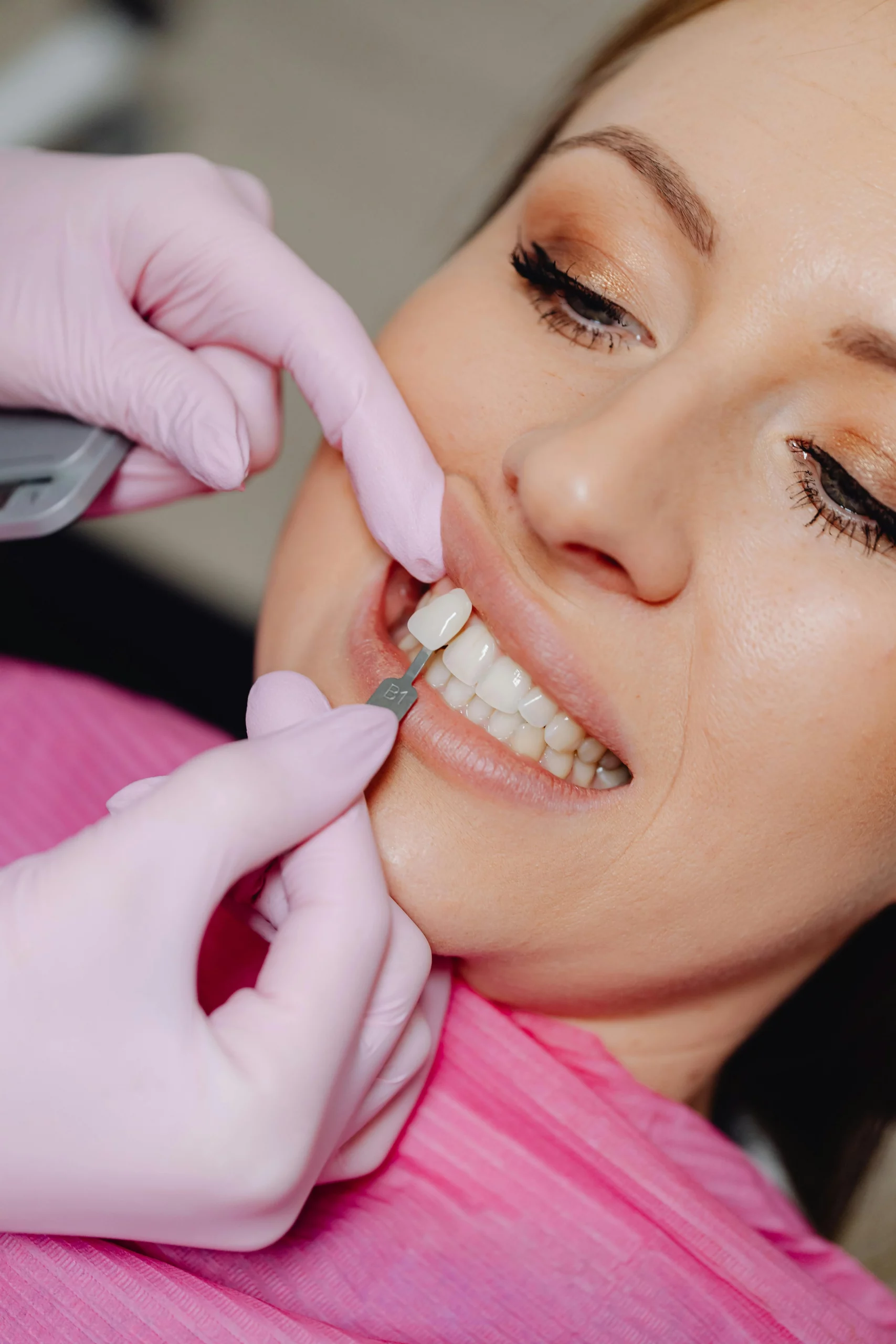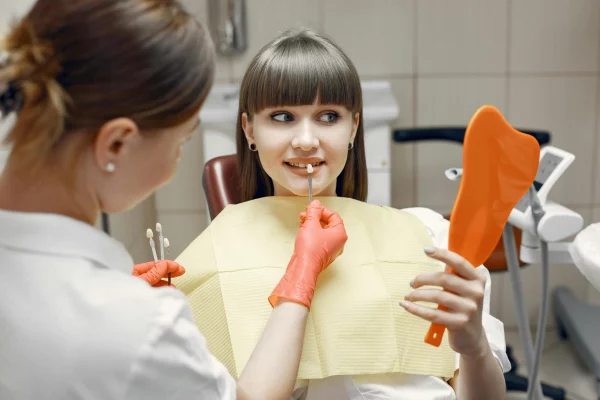In 2025, the growing trend of teens and veneers reflects a rising desire among young people to achieve the perfect smile. While veneers can dramatically enhance dental aesthetics, many dental professionals are expressing concern about their appropriateness for younger patients. This article explores the reasons behind the surge in popularity of veneers among teens, the potential long-term risks, and expert insights on whether this cosmetic solution is truly beneficial or potentially harmful for adolescent dental health.
Understanding Dental Veneers
Dental veneers function as an effective cosmetic intervention for individuals seeking to enhance their dental aesthetics. These thin shells, typically fabricated from porcelain or composite resin materials, are meticulously designed to replicate the appearance of natural tooth enamel. Veneers are frequently employed to address a range of dental imperfections, including discoloration, minor chips, gaps between teeth, and slight misalignments.
The application process involves the removal of a minimal amount of enamel from the tooth’s surface, which facilitates optimal adhesion and integration of the veneer. Once affixed, these restorations provide a durable and aesthetically pleasing improvement to the shape, color, and overall alignment of one’s teeth. Veneers thus represent a long-term solution for those pursuing a more harmonious and attractive smile.
Veneers for Teenagers
The recent surge in interest among teenagers for achieving an ideal smile has made dental veneers a popular consideration. Unlike traditional orthodontic treatments such as braces or aligners which often necessitate months or even years of commitment, veneers provide a swift and noticeable transformation, often within just a few dental appointments. This rapid enhancement can be particularly appealing to adolescents who are conscious of their social image or preparing for significant events like prom or graduation.
Still, it is crucial to consider the long-term consequences. Veneers require the permanent alteration of the natural tooth structure, and they are not a one-time solution; replacements will likely be needed in the future. Therefore, consultation with a qualified dental professional is essential to assess whether veneers are an appropriate and responsible choice for a teenager’s unique dental circumstances.
The Appeal of Veneers Among Teens
In recent years, there’s been a noticeable increase in the number of teenagers pursuing cosmetic dentistry, veneers, in particular, have captured significant attention. Social media platforms and celebrity culture have set high standards for physical appearance, often emphasizing the importance of a “perfect” smile. Veneers, which offer rapid and dramatic improvements, are understandably appealing to young people who wish to avoid the lengthy process associated with traditional orthodontic solutions.
Nonetheless, it is crucial to weigh the long-term consequences of such decisions. The veneer procedure involves the permanent alteration of natural teeth, which carries lasting implications. While the immediate aesthetic benefits are evident, individuals must consider whether opting for veneers at a young age aligns with their long-term oral health and personal goals. Careful deliberation and consultation with dental professionals are advised before making such a significant commitment.
Instant Aesthetic Enhancement
Veneers offer a rapid and highly effective solution for various dental imperfections, such as discoloration, chips, gaps, and minor misalignments. Unlike traditional orthodontic treatments which often require months or even years to yield visible results, veneers can produce noticeable changes within just a few dental visits. This immediacy holds particular appeal for adolescents seeking prompt improvements before significant events like prom, graduation, or senior photographs. The ability to quickly attain a brighter, more uniform smile contributes significantly to the rising popularity of veneers among image-conscious youth.
Influence of Social Media and Celebrities
The influence of social media and celebrity culture cannot be overstated in shaping contemporary teenage beauty standards. Platforms such as Instagram, TikTok, and YouTube frequently showcase celebrities and influencers with immaculate, luminous smiles, many of which have been enhanced through veneers. The proliferation of these curated images fosters the perception that an ideal smile is both desirable and attainable, motivating many teenagers to pursue similar cosmetic dental enhancements. For these individuals, veneers are often viewed as a direct pathway to emulating the appearance and perceived status of their admired public figures.
Boost in Self-Confidence
A further benefit of veneers is the substantial improvement in self-confidence they can provide. Adolescence is a period marked by heightened sensitivity to appearance-related concerns, and dental imperfections may serve as a significant source of insecurity. By offering a dramatic transformation, veneers can help adolescents feel more comfortable and self-assured in social settings. Enhanced self-esteem can, in turn, positively affect academic performance, peer relationships, and overall mental well-being. This psychological advantage constitutes an important consideration for both teenagers and their parents when evaluating cosmetic dental solutions.
Potential Risks of Veneers for Teens

The application of veneers in adolescents raises several notable concerns, particularly due to the permanent alteration of tooth structure. Removal of enamel, a process required for veneer placementis , irreversible. Unlike other tissues, enamel does not regenerate. For teens, whose teeth and jaws are still in the midst of growth and development, this irreversible change presents significant long-term risks. Early intervention may increase susceptibility to dental decay and potentially complicate future dental procedures. Therefore, such decisions require careful consideration in consultation with a dental professional.
In addition, the teenage years are marked by ongoing oral and craniofacial development, including jaw growth and dental alignment changes. Introducing veneers during this dynamic period can disrupt natural developmental trajectories, potentially resulting in misalignment or occlusal issues later in life. Premature alteration of teeth may also necessitate replacement veneers sooner than anticipated and could complicate future orthodontic or restorative treatments. It is crucial for adolescents and their guardians to weigh these long-term implications thoroughly.
Furthermore, because the process of placing veneers entails reduction of the enamel layer, it exposes the underlying dentin, which is more sensitive. This may lead to increased discomfort or sensitivity, particularly in response to temperature extremes or sugary foods and beverages. For some individuals, this sensitivity can be persistent and may require ongoing dental management, which is especially relevant for adolescents with varied and unpredictable dietary habits.
Finally, while modern veneers are designed for durability, they are not impervious to damage. Adolescents who participate in sports, chew hard objects, or have habits such as bruxism (teeth grinding) are at an elevated risk for chipping or fracturing their veneers. Such damage can necessitate costly repairs or even total replacement. Thus, diligent care and lifestyle modifications, including the use of protective mouthguards during sports and night guards as needed, are essential components of ongoing care for adolescents with veneers.
Expert Opinions on Veneers for Teens

Dr. Arthur Glosman takes a notably cautious approach regarding veneers for adolescents. He points out that teenagers’ teeth and jaws are still developing, and early intervention with veneers can result in lasting complications. He recommends waiting until at least age 16, ideally confirming full dental and skeletal maturity before considering the procedure. Dr. Glosman stresses the necessity of a comprehensive evaluation by a qualified dental professional to determine the right timing and eligibility. His perspective prioritizes dental health and proper development above cosmetic enhancement during the formative years.
Dr. Marc Lowenberg, who is recognized for his work with high-profile clients, acknowledges that demand for veneers among teenagers has increased due to social media influence. Despite this trend, he advises both parents and adolescents to proceed with significant caution and informed decision-making. Dr. Lowenberg emphasizes the importance of thorough dental consultations to assess whether a teenager is genuinely an appropriate candidate for veneers. Additionally, he suggests that alternative cosmetic treatments may be preferable for younger patients. Ultimately, his position reinforces the principle that long-term oral health and proper dental development should take precedence over aesthetic improvements.
Alternatives to Veneers for Teenagers
Veneers might initially appear to provide a straightforward solution for improving one’s smile; however, they’re typically not recommended for teenagers. The procedure is irreversible and requires significant alteration of natural tooth structure—a considerable commitment for someone still in their adolescent years. There are, fortunately, more suitable alternatives tailored for younger individuals. Options such as clear aligners, professional whitening, or minor dental bonding can effectively address common concerns like misalignment, discoloration, or small imperfections, all while preserving healthy tooth tissue.
Orthodontic Treatments
For adolescents experiencing dental misalignment, crowding, or spacing, orthodontic interventions such as braces and clear aligners present established, non-invasive solutions. Unlike veneers, which primarily conceal dental imperfections, orthodontic care addresses the underlying structural issues, promoting both functional and aesthetic improvement. The duration of orthodontic treatment may extend over several months or years; however, these methods help preserve natural tooth integrity and support long-term oral health. Modern options, including clear aligners, cater especially well to self-conscious teenagers seeking discreet corrective measures. As such, orthodontic treatment remains a developmentally appropriate and evidence-based approach for most teenagers.
Dental Bonding
Dental bonding provides a conservative cosmetic alternative for managing minor chips, gaps, or irregularities in adolescent patients. This procedure utilizes a tooth-colored composite resin, which is carefully sculpted and then cured with a specialized light, resulting in immediate enhancement of dental appearance. Notably, dental bonding involves minimal alteration of tooth enamel and is considered reversible, thus presenting fewer long-term risks compared to veneers. While bonded restorations are not as durable as porcelain veneers, they can be maintained for several years with appropriate oral care. For teenagers seeking prompt yet minimally invasive cosmetic improvement, dental bonding is an appealing intermediate option.
Teeth Whitening
For teenagers concerned with extrinsic tooth discoloration, professional teeth whitening under dental supervision offers a safe and effective alternative to veneers. Such treatments can significantly improve tooth shade without compromising the underlying tooth structure. Teeth whitening is particularly beneficial for adolescents whose discoloration results from dietary factors or remnants of orthodontic adhesives. Dental professionals can tailor whitening protocols to accommodate individual sensitivity and age-related considerations. Overall, teeth whitening provides a non-invasive method for enhancing smile aesthetics without permanent dental alteration.
Frequently Asked Questions (FAQs)
1. At what age is it appropriate for a teenager to get veneers?
Typically, veneers aren’t recommended for anyone under sixteen. At that age, dental and jaw development is still underway, so placing veneers too soon can interfere with natural growth and may lead to complications or extra dental work later. It’s really important to consult a qualified dentist, they’ll assess whether an individual’s teeth and jaw have matured enough for veneers to be a safe option.
2. Are there non-invasive alternatives to veneers for teenagers?
Certainly, there are more conservative and safer alternatives to veneers for adolescents. Orthodontic interventions, such as traditional braces or clear aligners, offer effective solutions for correcting misalignment or spacing concerns without altering the natural tooth structure. Dental bonding presents a minimally invasive approach for addressing minor chips or refining tooth shape, while professional teeth whitening can improve dental aesthetics by enhancing tooth color, all without the need for irreversible procedures.
3. What are the risks associated with veneers for teenagers?
Veneers present several notable risks when applied to adolescents. To begin with, the procedure requires permanent removal of enamel, which irreversibly alters the integrity of the natural tooth. This is not a reversible process, and the original tooth structure cannot be restored once it has been modified. Additionally, since teenagers’ teeth and jaws are often still developing, introducing veneers during this period may disrupt natural alignment and growth patterns. There is also a heightened risk of tooth sensitivity following veneer placement, particularly in response to temperature changes or certain foods.
4. How can I determine if veneers are suitable for my teen?
An initial, comprehensive consultation with a qualified cosmetic dentist is essential. The dentist will assess your teen’s oral health, current stage of dental development, and individual aesthetic objectives. They will discuss the benefits and potential drawbacks of veneers, as well as consider alternative options that may better suit your teen’s needs. This tailored approach helps to ensure that any cosmetic intervention is both appropriate and sustainable for the long term.
5. Are veneers a permanent solution?
While veneers are relatively durable, they are not a lifelong solution. Over time, it’s common for veneers to experience wear, discoloration, or even minor fractures, which means repairs or replacements may eventually be necessary. Adolescents with veneers should maintain strong oral hygiene practices and steer clear of habits—like chewing on pens or ice—that could compromise their veneers’ integrity. Regular dental visits remain essential for monitoring the condition of veneers and supporting their longevity.
Thinking about veneers for your teen? It’s a popular trend, but are veneers the right choice for growing smiles? At GPD Dental, we help parents and teens understand the benefits and risks of veneers, ensuring safe, healthy decisions for long-term dental wellness. Don’t rush into a cosmetic fix without expert advice. Book a consultation today and get the facts to protect your teen’s smile.


